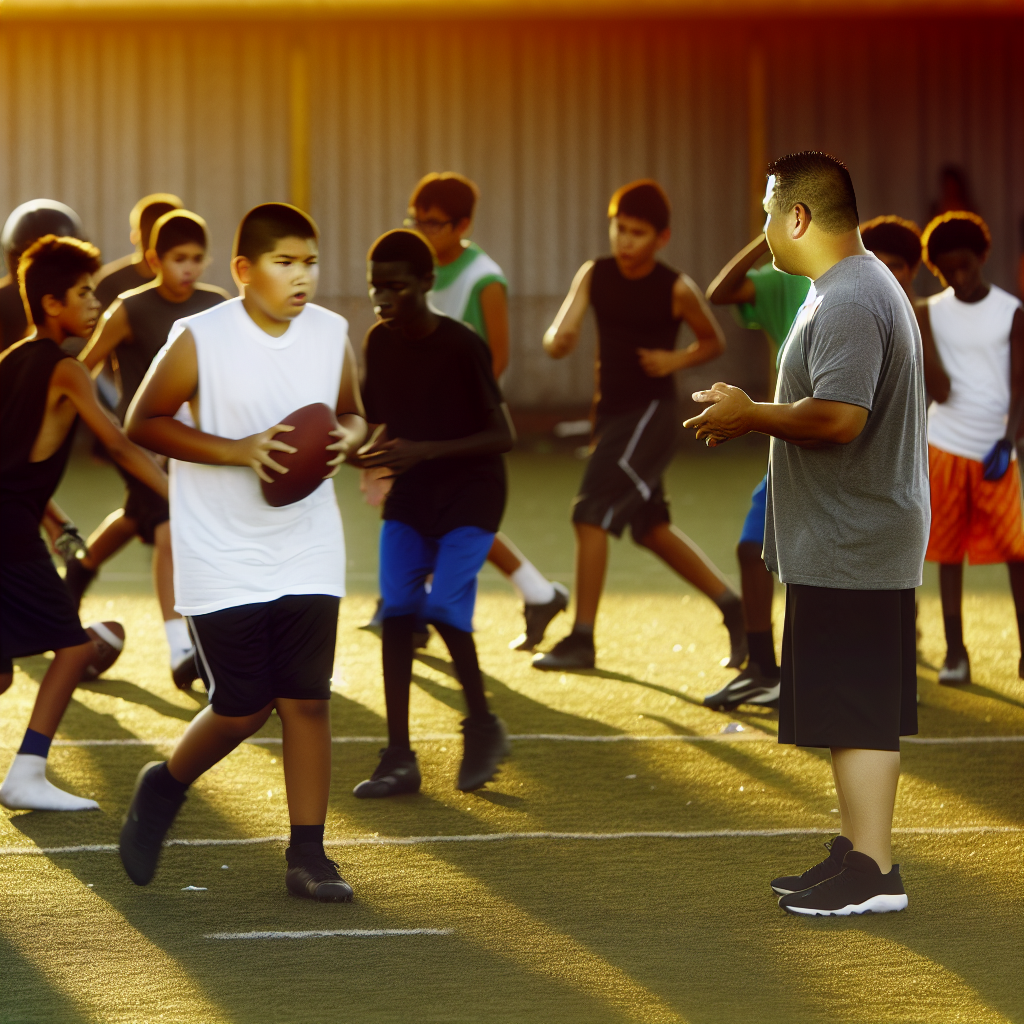Football coaching plays a crucial role in the advancement of young athletes, shaping their skills and fostering their passion for the game. This article explores various strategies and techniques that drive effective youth football development, emphasizing the importance of a robust coaching philosophy and comprehensive training programs. (more…)
Blog
-

Mastering the Art of Football Coaching
Effective football coaching goes beyond just training routines; it’s about nurturing young talent, understanding tactical formations, and developing unique skills. This article dives into the essentials of youth football development, from coaching philosophies to advanced soccer drills, offering insights into building a comprehensive player development program. (more…)
-

Mastering the Game: Key Elements in Modern Football Coaching
Modern football coaching is a comprehensive blend of tactical strategies, youth development, and philosophical insights. Delving into coaching disciplines from ball control to tactical formations, this article unravels the multifaceted approach required to foster young talent and enhance team performance at all levels. (more…)
-

Mastering the Game: Essential Strategies for Aspiring Football Coaches
This article delves into the world of football coaching, focusing on critical aspects such as youth football development, tactical coaching, and player development programs. It unveils techniques for effective coaching, crucial training drills, and the importance of game analysis sessions for developing soccer IQ and communication skills in young athletes. (more…)
-

Mastering the Game: Comprehensive Strategies in Football Coaching
In modern football coaching, integrating tactical awareness with player development is crucial. From youth football development to advanced soccer training drills, every aspect contributes to a team’s success. This article explores key components like tactical coaching, football practice plans, and ball control skills to unleash a footballer’s full potential. (more…)
-

The Art of Football Coaching: Inspiring a Generation of Young Athletes
Football coaching is a dynamic field that combines tactical knowledge, physical training, and mentorship to develop young athletes. This article explores essential coaching strategies, focusing on youth development, player training, and team dynamics. (more…)
-

Maximizing Youth Football Potential Through Strategic Coaching
In the realm of football coaching, nurturing young talents requires more than just technical drills; it demands a comprehensive approach encompassing tactical understanding, physical development, and psychological growth. This article explores crucial elements like tactical coaching, football fundamentals, and player development programs to ensure promising futures for youth athletes. (more…)
-

Mastering the Art of Football Coaching: From Fundamentals to Advanced Tactics
Football coaching encapsulates the art and science of training athletes, focusing on youth development, tactical preparation, and mental fortitude. This comprehensive guide delves deep into each facet, aimed at enhancing both player and coach understanding of the sport, solidifying skills, and nurturing promising talent. (more…)
-

Mastering the Art of Football Coaching: Strategies for Success
Football coaching transcends the traditional bounds of the sport, focusing on the all-encompassing development of players through tactical coaching and personal growth. This article explores various aspects of coaching, from developing a robust team strategy to honing individual skills, with a focus on nurturing young talent and fostering a comprehensive football environment. (more…)
-

Mastering Football Through Effective Coaching Strategies
Football coaching is not just about imparting skills; it involves nurturing young talents, strategizing games, and fostering teamwork. Discover effective strategies in youth football development, player growth, and tactical coaching excellence for a holistic approach to the beautiful game. (more…)
